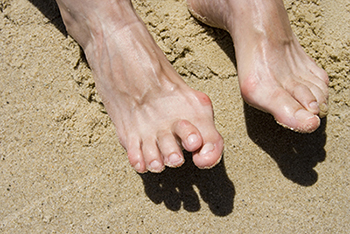Hammertoes

What’s a hammertoe?
A hammertoe is a relatively common deformity where your toe bends abnormally. This podiatric condition most often develops on your second or third toes and be quite painful.
One of the first signs of a hammertoe is a callus or corn that develops on the top of one of the joints on your toe--due to it rubbing against the inside of your shoe. The pain from having a hammertoe can cause you to walk differently than you would normally. This gait abnormality can lead to pain in your ankles, knees, hips, and back.
Hammertoes tend to become increasingly more severe and painful when untreated. So, if you notice signs of a hammertoe, call In Step Podiatry or make an appointment online with Dr. Mbanuzue.
What causes hammertoes?
Hammertoes occur when the muscles on the bottom of your toe are stronger than the ones on top. The uneven tension in the muscles pulls your toe into a hooked shape like a hammer.
In most cases, hammertoes are a hereditary trait. That means, if a member of your family has a hammertoe, chances are you could develop one, too. Your risk of developing hammertoes also increases if you wear shoes that are too tight or spend a lot of time in high heels.
How are hammertoes treated?
Dr. Mbanuzue offers a variety of treatments for hammer toes. In most cases, she asks you to try the following conservative treatments first to release your toe and rebalance your muscles:
- New, more appropriate, footwear
- Custom orthotics
- Physical therapy
If your hammertoe is too severe or doesn’t respond to these initial treatments, Dr. Mbanuzue performs surgery to release and straighten your toe. She is a well-trained and experienced surgeon who has performed countless podiatric surgeries.
Dr. Mbanuzue always takes time to discuss your treatment options and answer all your questions thoroughly so that you can make an informed decision about your treatment. Ultimately, her goal is to help all men, women, and children lead pain-free and active lives.
If you have a hammertoe, even if it’s not causing pain or getting in the way of your regular activities, call or schedule an appointment online today. The earlier you receive the proper treatment, the less invasive this condition is likely to be.

